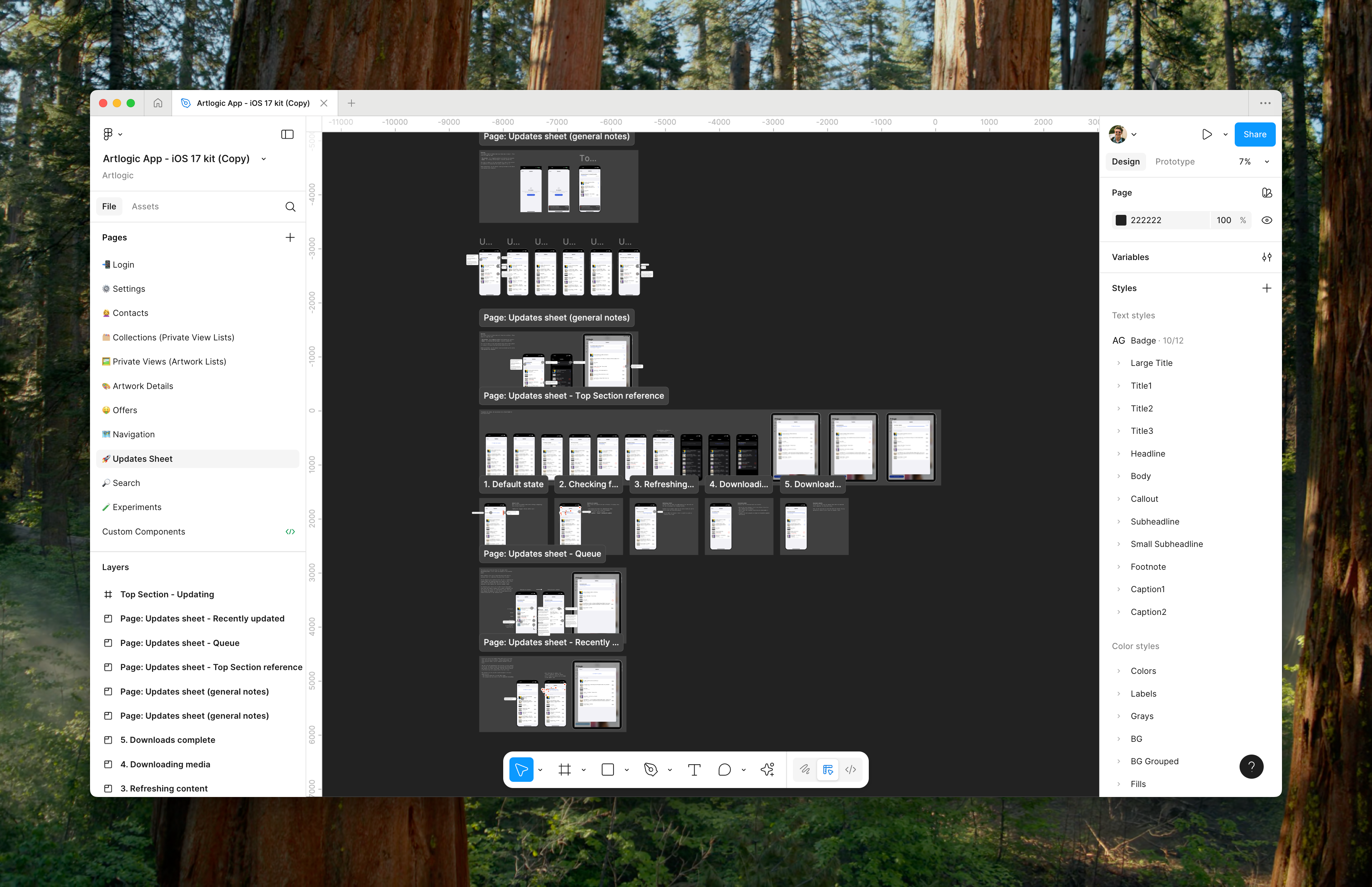Web designer and developer
Product design for Artlogic Private Views iOS app.
Artlogic Private Views App

This work was completed during my employment at Artlogic.
Summary
As lead product designer on the Artlogic App, a mobile platform used by galleries, artists, and collectors, I helped transform the team’s approach to product development. By embedding user research into the roadmap, driving UI consistency, and championing a data-informed, design-led process, I improved the app’s usability, visual clarity, and strategic direction.
Role and timeline
- Role: Lead Product Designer
- Team: Part of a product trio with PM and engineers
- Timeline: 2023–2025
- Platform: Native iOS app
The challenge: design had no seat at the table
When I joined the team, design hadn’t been embedded into the process. Feature development was largely engineering-led, with limited UX validation. This resulted in inconsistent UI, unclear workflows, and a growing gap between user needs and what was being built.
I joined as the app was under pressure. Support queries were rising, confidence was low, and leadership wasn’t sure it was worth continued investment. My role was to elevate design as a strategic function and guide the app toward better usability and product–market fit.
Key contributions and outcomes
1. Establishing design leadership and product process
- Introduced UX discovery practices into planning: journey mapping, user interviews, and heuristic evaluations.
- Embedded research insights into roadmap planning and prioritisation.
- Ran regular design reviews, aligned cross-functionally on user goals.
Impact: Design became an equal partner in product decisions. User needs were considered from day one, not just in validation.
2. Overhauling the UI and design system foundations
- Conducted a UI audit and mapped inconsistencies across components.
- Defined a new set of Figma components and UI standards aligned with Apple HIG and Artlogic branding.
- Worked with engineers to phase adoption across screens.
Impact: Improved visual clarity, reduced design–dev ambiguity, and created reusable patterns that sped up feature work and reduced UI bugs.

3. Laying the foundation for data-informed product development
- Pushed for Pendo (already in use on web) to be implemented in the iOS app.
- Worked with the PM to define initial cohorts and analyse user flows.
Impact: Provided the team’s first objective insights into in-app usage. Set the foundation for measuring feature adoption, drop-offs, and validating roadmap priorities.
4. Creating a customer feedback loop
- Identified key power users and created a test group aligned to target personas.
- Ran regular sessions for usability testing, concept feedback, and iterative design validation.
Impact: De-risked assumptions and caught edge cases early. One example: iterative testing of the artwork status flow uncovered key interaction problems and led to higher success rates post-launch.
5. Onboarding redesign
- Analytics showed high drop-off during onboarding. Support queries revealed confusion about sync.
- Storyboarded a new onboarding flow focused on key value props and sync reliability.
- Designed interactive screens and tested for clarity with target users.
Impact: Created a clearer, brand-aligned first-use experience that addressed the biggest early friction point.
6. Design documentation and continuity
- Created a Figma library with UI components, flows, states, and interaction patterns.
- Documented design rationale to support async collaboration and future handover.
Impact: Enabled cross-team understanding and fast onboarding for the next designer. Reduced knowledge silos and built a stronger design culture.
Results
- Shifted the team from engineering-led to user-centred product development
- Improved the clarity and usability of the app interface
- Reduced user friction through informed UX decisions and faster iteration cycles
- Positioned the app for continued growth and investment
Reflection
This role showed the real-world impact of embedding design early: not just on the UI, but on the product's trajectory. Through research, process change, and close collaboration, we helped transform a fragile, under-supported mobile app into a confident, user-led experience ready for growth.



